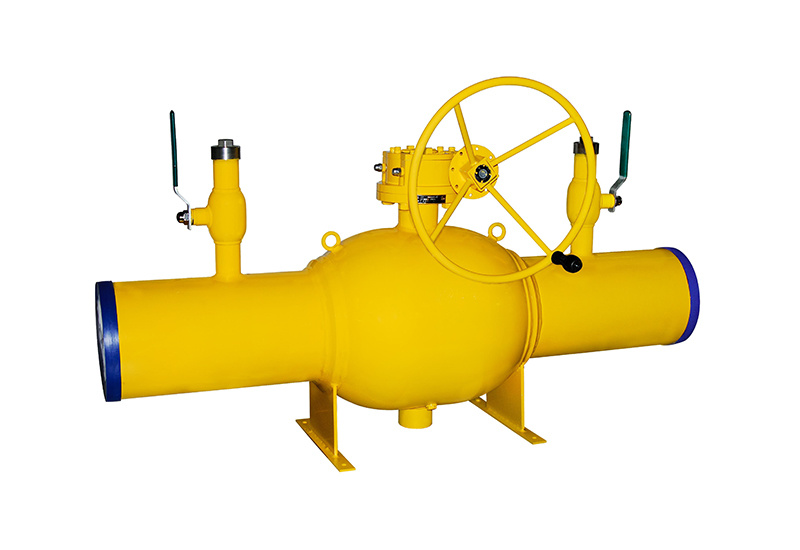What are the structural features of a ventilation butterfly valve?
Release date:
2019-06-25
Valves vary in effectiveness depending on their design. Today, let Tianjin Butterfly Valve Manufacturer’s editor guide you through the structural features of ventilation butterfly valves. A ventilation butterfly valve is crafted by welding steel plates together, giving it advantages such as compact size, lightweight construction, and ease of installation. Additionally, it boasts low flow resistance and high throughput, while remaining unaffected by thermal expansion at high temperatures. Its minimal operating torque ensures smooth, flexible opening and closing, making it incredibly convenient to use—a favorite among industry professionals. One of the key structural features of this valve is its design: it combines a centerline butterfly disc with a short, welded steel plate. This innovative construction eliminates internal components like connecting rods and bolts, virtually eliminating the risk of component-related issues during operation. As a result, the failure rate remains exceptionally low, ensuring reliable performance and making it a dependable valve solution. Moreover, the valve employs a metal-to-metal sealing system, which, though not as tight-sealing as elastic designs, offers superior durability and longevity. It also excels in withstanding high temperatures, making it ideal for industries such as construction materials, power generation, and metallurgy. This butterfly valve can be seamlessly integrated into pipelines transporting media at temperatures up to 300°C, enabling both connection/disconnection and precise flow regulation. Additionally, these valves can be custom-made to meet specific customer requirements, offering unparalleled flexibility and user-friendliness. Thanks to the generous clearance between the butterfly disc and the valve body, there’s ample room for thermal expansion and contraction—effectively preventing the disc from seizing up under temperature fluctuations. Ventilation butterfly valves come in a variety of actuation options, including manual, electric, and pneumatic drives, providing users with plenty of choices to suit their needs. And because of the high-quality materials used, these valves are not only resistant to extreme temperatures but also operate smoothly without any friction during switching, further enhancing their long service life.
Valves vary in effectiveness depending on their design. Today, let the editor from Tianjin Butterfly Valve Manufacturer introduce you to the structural features of ventilation butterfly valves.
The ventilation butterfly valve is a type of valve fabricated by welding steel plates. It features a compact size, lightweight design, and ease of installation. Additionally, thanks to its low flow resistance and high throughput, it remains unaffected by thermal expansion even at elevated temperatures. The valve also requires minimal operating torque, allowing for exceptionally smooth and responsive opening and closing—making it incredibly convenient to use. As a result, it’s highly favored among industry professionals.
The ventilation butterfly valve features a unique structural design: it is constructed by welding a centerline disc with a short, robust steel plate. This design eliminates internal components like connecting rods and bolts, significantly reducing the risk of mechanical issues during operation and resulting in an exceptionally low failure rate. As a result, it’s incredibly easy to use and stands as a highly reliable valve solution.
Moreover, since its sealing system uses a metal closure—though not as effective as an elastic seal—the metal design offers a longer service life and excellent resistance to high temperatures. As a result, it’s widely used across industries such as construction materials, power generation, and metallurgy. This butterfly valve can effectively handle connection, shut-off, and flow regulation in pipelines transporting media at temperatures up to 300°C. Plus, these valves can even be custom-made to meet specific customer requirements, making them exceptionally user-friendly and adaptable.
Because the butterfly plate in a ventilation butterfly valve has a large gap between itself and the valve body, providing ample room for thermal expansion, it effectively prevents issues caused by thermal expansion and contraction due to temperature changes during operation—eliminating the risk of the butterfly plate becoming stuck. Commonly available butterfly valves come with a variety of actuation options, including manual, electric, and pneumatic drives, offering customers plenty of flexibility in their choice. Additionally, thanks to its material composition, this type of butterfly valve also boasts excellent heat resistance, ensuring smooth operation without friction and delivering an exceptionally long service life.

Latest Updates
Share to
Address: NO.7A BULIDING, ZHUAO IND.ZONE,OUBEI STREET, YONGJIA, 325105,WENZHOU,ZHEJIANG CHINA
Mobile phone:86-15868793566
Phone:86-577-57775050
Fax: 86-577-57779292
Email:boho@china-boho.com



